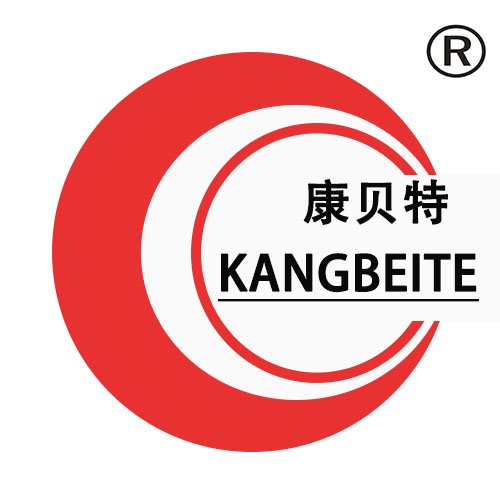IQF (Individual Quick Freezing) muzlatgich narxi bir nechta o'zgaruvchilarga bog'liq bo'lgan dinamik omildir. Bunga mashina quvvati, texnik xususiyatlari, brend nomi, sotuvdan keyingi qo'llab-quvvatlash va mintaqaviy bozor sharoatlari kiradi. Shu sababli oziqqa ishlov beruvchi bizneslar uchun ushbu omillarni tushunish hamda ma'lumotga asoslangan xarid qarorlarini qabul qilish muhimdir. Kirish darajasida, kichik oziq ishlov beruvchi yoki mehnat mahsulotlari ishlab chiqaruvchilari uchun mo'ljallangan, 100–500 kg/soat quvvatga ega IQF muzlatgichlar narxi odatda 15 000 AQSH dollardan 50 000 AQSH dollargacha bo'ladi. Bu turdagi qurilmalar ko'pincha kompakt bo'lib, asosiy muzlatish texnologiyasiga (masalan, havo portlash tizimlari) ega, shuningdek, qo'lda yoki yarim avtomatik boshqaruvli bo'ladi. Ular mevalar, kichik sabzavotlar yoki dengiz mahsulotlarining kichik partiyalarini muzlatish uchun mos keladi. O'rtacha darajadagi IQF muzlatgichlar (500–2000 kg/soat quvvatga ega) o'rtacha o'lchamdagi oziq fabrikalariga xizmat ko'rsatadi va ularning narxi 50 000 AQSH dollardan 150 000 AQSH dollargacha bo'ladi. Mazkur modellar yanada murakkab xususiyatlarga ega bo'lib, masalan, turli mahsulot turlari uchun muzlatishni optimallashtirish uchun havo tezligini sozlash, chidamli va oziq xavfsizligi uchun nerozga chidamli po'latdan foydalanish, hamda harorat va muzlatish vaqtini nazorat qiluvchi integratsiya qilingan boshqaruv tizimlarini o'z ichiga oladi. Bu tizimlar fri, tovuq go'shti bo'laklari yoki kesilgan sabzavotlarni katta hajmda qayta ishlash uchun ideal variantdir. Yuqori quvvatli IQF muzlatgichlar esa (2000 kg/soatdan yuqori quvvatga ega) ko'p millatli oziq ishlab chiqaruvchi korxonalar uchun mo'ljallangan bo'lib, ularning narxi 150 000 AQSH dollardan 500 000 AQSH dollargacha yoki undan ham ko'proq bo'lishi mumkin. Mazkur mashinalar sozlamaga moslashtirilgan muzlatish tunnellari, global atrof-muhit me'yori (masalan, R449A yoki R513A kabi ekologik xavfsiz sovutuvchi vositalar) talablariga javob beruvchi murakkab sovutish tizimlari, shuningdek, oldingi va keyingi ishlab chiqarish liniyalari bilan integratsiya qilingan to'liq avtomatlashtirilgan transportyor tizimlarini o'z ichiga oladi. Bu esa mehnat xarajatlarini kamaytirish va ishlab chiqarish hajmini maksimal darajada oshirish imkonini beradi. Asosiy quvvatdan tashqari, qo'shimcha xususiyatlar narxga sezilarli ta'sir qiladi: masalan, cryogenic muzlatish texnologiyasiga (suyuq azot yoki uglerod dioksididan foydalangan holda) ega IQF muzlatgichlar odatdagi havo portlash modeli bilan taqqoslaganda 30–50% qimmatroq bo'ladi. Chunki ular mahsulotning tuzilishini va oziq moddalarini saqlab qolish uchun tezroq muzlatish imkonini beradi, lekin cryogenlar uchun operatsion xarajatlarning ham ko'payishiga sabab bo'ladi. Brend nomi ham muhim rol o'ynaydi: ishonchli ishlab chiqarish va global sotuvdan keyingi qo'llab-quvvatlash tarixiga ega taniqli ishlab chiqaruvchilar (masalan, KANGBEITE) kam tanilgan brendlar bilan taqqoslaganda 10–20% qimmatroq bo'lishi mumkin, lekin bu ko'pincha mashinalarning me'yorida kamroq xizmat ko'rsatish xarajatlari va uzoq muddatli foydalanishga olib keladi. Import tariflari, yetkazib berish xarajatlari va mahalliy me'yoriy talablarga (masalan, AQSHda FDA ko'rsatmalariga yoki Yevropa Ittifoqida CE standartlariga moslik) bog'liq bo'lgan mintaqaviy omillar umumiy xarajatlarga 5–15% qo'shadi. Masalan, Yevropaga IQF muzlatgichni import qilish mahalliy sotib olishga qaraganda qo'shimcha sertifikatlashtirish to'lovlari bilan bog'liq bo'ladi. Sotuvdan keyingi xizmatlar, jumladan, o'rnatish, o'qitish va kafolat (1–5 yil) ham narxga ta'sir qiladi: kengaytirilgan kafolat va joyida qo'llab-quvvatlash xizmati bilan jihozlangan mashinalar 5–10% qimmatroq bo'lishi mumkin, lekin bizneslar uchun qulaylik hissini beradi. Nihoyat, bozor talabi va etkazib berish zanjiri sharoatlari (masalan, sovutish komponentlari uchun asosiy xom ashyoning yetkazib berish kamchiligi) 5–10% gacha bo'lgan qisqa muddatli narx o'zgarishlariga sabab bo'lishi mumkin. Xulosa qilib aytganda, IQF muzlatgichlar narxi keng chegarada farq qilsa ham, bizneslar ishlab chiqarish ehtiyojlari va byudjeti bilan mos keladigan mashina xususiyatlarini tanlashda dastlabki xarajatlarni hamda uzoq muddatli operatsion xarajatlarni hisobga olish orqali foydali investitsiya qilishlari kerak.




Huquqiy to'liqlik © 2025 Shandong Kangbeite Taom Pakerlash Masinasi Kompaniyasi Maxfiylik siyosati